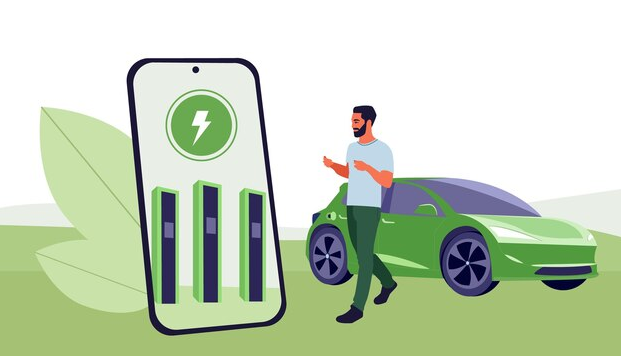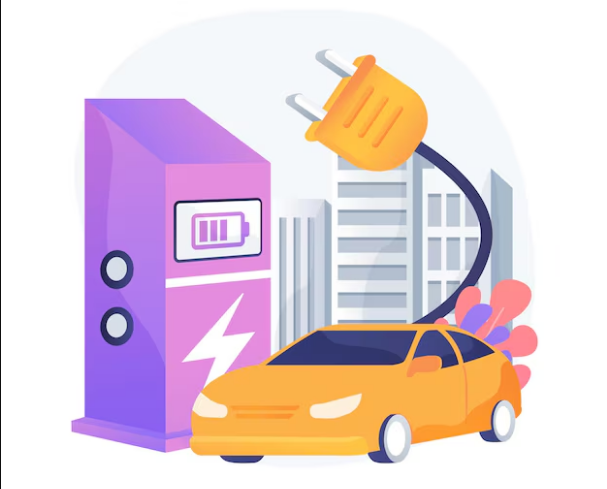Electric vehicles (EVs) are rapidly gaining traction across the United States as consumers seek environmentally friendly alternatives to traditional gas-powered cars. With the rise of EVs, understanding the intricacies of financing these vehicles has become increasingly important for potential buyers.
From government incentives to specialized loan options, there are several factors to consider when deciding how to finance your electric vehicle. This guide will help you navigate the process, ensuring you make informed decisions every step of the way.
Understanding government incentives and tax credits

Federal tax credits: What they mean for you
The federal government offers a tax credit for purchasers of new electric vehicles, which can significantly reduce the overall cost of your EV. This tax credit, currently up to $7,500, is designed to incentivize the purchase of electric vehicles and promote the shift towards sustainable transportation. However, not all EVs qualify for the full credit.
The federal tax credit begins to phase out once a manufacturer sells 200,000 qualifying vehicles. For example, Tesla and General Motors have reached this threshold, meaning their new vehicles no longer qualify for the federal tax credit. It’s crucial to check the current status of the tax credit for the specific EV you are interested in.
State and local incentives: Additional savings opportunities
In addition to the federal tax credit, many states and local governments offer their own incentives to encourage the purchase of electric vehicles. These incentives can take various forms, including rebates, tax credits, reduced registration fees, and even access to HOV lanes.
The availability and amount of these incentives vary widely depending on where you live. For example, California offers one of the most generous state rebates, with up to $2,500 available for eligible EVs. Some states, like Colorado, provide additional tax credits on top of the federal incentive.
It’s important to research the specific incentives available in your area, as they can significantly reduce the upfront cost of your electric vehicle. In some cases, these incentives can be applied directly at the point of sale, further lowering the amount you need to finance. However, these programs often have eligibility requirements, such as income limits or vehicle price caps, so it’s essential to understand the details before making your purchase.
Financing options for electric vehicles
Traditional auto loans: What you need to know
When it comes to financing an electric vehicle, traditional auto loans remain a popular choice for many buyers. These loans are offered by banks, credit unions, and other financial institutions, with terms typically ranging from three to seven years.
The interest rates on these loans can vary widely depending on your credit score, the lender, and the loan term. Generally, buyers with excellent credit can secure lower interest rates, reducing the overall cost of the loan. However, financing an electric vehicle with a traditional auto loan requires careful consideration. Electric vehicles often have a higher upfront cost compared to their gas-powered counterparts, which can result in higher monthly payments.
It’s essential to compare offers from multiple lenders to ensure you’re getting the best deal possible. Additionally, some lenders may offer special financing programs for electric vehicles, which can include lower interest rates or longer loan terms. Be sure to ask about these options when shopping for your EV loan.
Leasing: A flexible alternative
Leasing an electric vehicle can be an attractive option for those who prefer flexibility and lower monthly payments. When you lease an EV, you’re essentially renting the vehicle for a set period, typically two to three years. At the end of the lease term, you have the option to purchase the vehicle or return it to the dealer. One of the key advantages of leasing is that it allows you to drive a new car every few years, taking advantage of the latest technology and features without committing to a long-term purchase.
Leasing also comes with its own set of financial considerations. While the monthly payments are often lower than those of a traditional auto loan, there may be additional fees, such as a down payment, acquisition fee, and disposition fee. Moreover, lease agreements typically include mileage limits, and exceeding these limits can result in costly penalties.
It’s also important to note that federal and state incentives may not be directly available to lessees, as these credits often go to the leasing company. However, some dealerships may pass on these savings in the form of lower monthly payments, so it’s worth inquiring about how incentives are handled in a lease agreement.
The future of electric vehicle financing
Green loans: A growing trend
As electric vehicles continue to grow in popularity, financial institutions are developing new products specifically designed to finance these eco-friendly vehicles. One such product is the “green loan,” which is tailored for borrowers looking to purchase energy-efficient products, including electric vehicles.
Green loans often come with competitive interest rates and terms that are favorable for EV buyers. Some lenders even offer additional benefits, such as lower rates for borrowers with good environmental practices, or flexible payment options.
Green loans can be an excellent choice for environmentally conscious buyers who want to align their financing with their values. These loans may also come with perks like no early repayment penalties, allowing you to pay off your loan faster if your financial situation improves.
However, it’s important to carefully read the terms and conditions, as not all green loans are created equal. Some may have stricter eligibility requirements or higher fees compared to traditional auto loans. Therefore, it’s crucial to compare different green loan options to find the one that best fits your needs.
The role of technology in electric vehicle financing
Technology is playing an increasingly important role in the financing of electric vehicles. Many lenders now offer online tools and apps that allow buyers to apply for loans, compare rates, and even calculate their potential savings from government incentives—all from the convenience of their smartphones.
These tools can simplify the financing process and help you make informed decisions quickly. Additionally, some EV manufacturers have started to offer their own financing options, often in partnership with major financial institutions, providing buyers with a seamless purchasing experience.
Looking ahead, the integration of technology in EV financing is expected to continue evolving. Innovations like blockchain could offer more transparent and secure financing transactions, while artificial intelligence could help lenders better assess borrower risk, potentially leading to more personalized loan offers.





